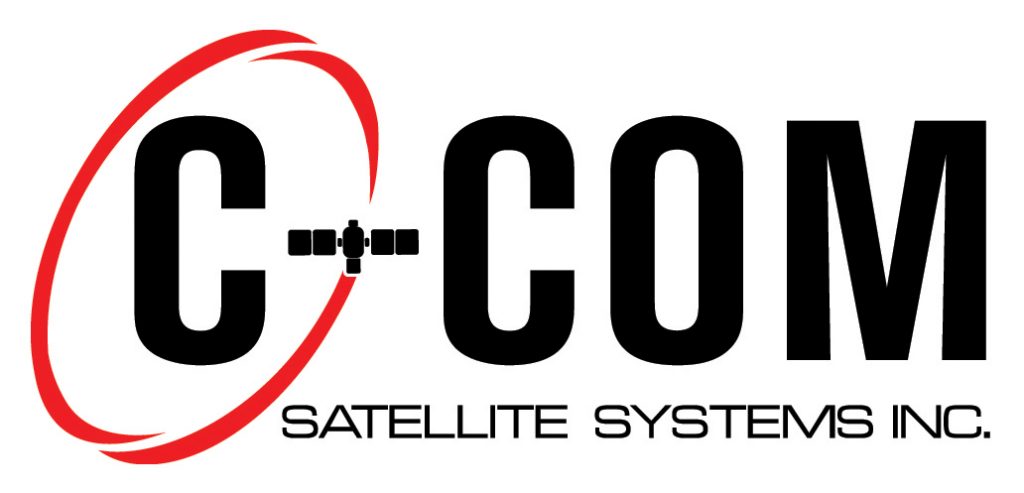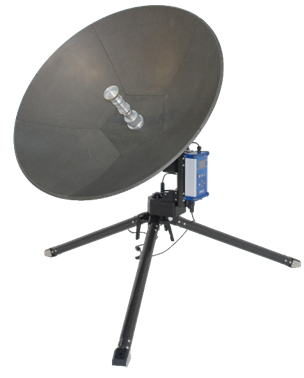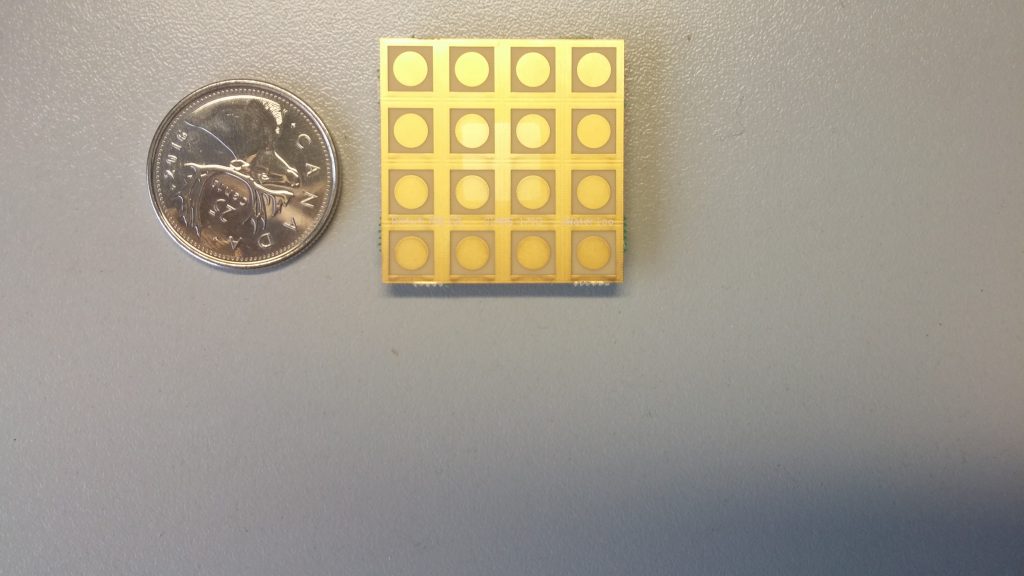
C-COM Satellite Systems Inc. is a pioneer and leading designer, developer, and manufacturer of transportable and mobile satellite-based antenna systems for commercial markets. The Company has developed proprietary, auto-acquisition controller technology for rapid antenna pointing to a satellite with just the press of a button, enabling Broadband Internet via Satellite across a wide range of market applications worldwide, including regions unserved or underserved by terrestrial access technologies. C-COM has sold more than 8,500 antenna systems, in over 100 countries, through a dedicated dealer network that provides service to a wide range of vertical markets such as Oil & Gas Exploration, Military Communications, Disaster Management, SNG, Emergency Communications, Cellular Backhaul, Telemedicine, Mobile Education, Government Services, Mobile Banking, and others. The Company’s iNetVu® brand is synonymous with high quality, reliability, and cost-effectiveness. C-COM is in late-stage development of a potentially revolutionary Ka-band, electronically steerable, modular, conformal, flat panel phased array antenna. In cooperation with the University of Waterloo, C-COM is engaged in the design of this unique antenna with the intent of providing low-cost, high-throughput mobility applications over satellite for land, airborne and maritime verticals. For additional information please visit www.c-comsat.com
INTERVIEW TRANSCRIPTS:
WSA: Good day from Wall Street, this is Juan Costello, Senior Analyst with the Wall Street Analyzer. Joining us today is Leslie Klein, CEO at C-Com Satellite Systems. The company trades on the TSX Venture CMI and over-the-counter CYSNF. Thanks for joining us today there, Leslie.
Leslie Klein: Pleasure, and thank you for having me Juan again. We have not spoken for a while. It’s a pleasure to speak with you again today.
WSA: Yeah, certainly. I appreciate the update here. It’s been about a year-and-a-half, and for some of our listeners that are new to the story, can you provide us with an overview and intro?
Leslie Klein: Sure. Since last we spoke actually the company has moved to the OTCQB. As you mentioned, we’re over-the-counter, but we’re now in the OTCQB under a symbol CYSNF. I repeat it CYSNF and we’re also on the Toronto Venture Exchange under the symbol CMI. So as you probably know because we talked before, the company has been in business over 24 years and it has been quite a ride for the company. We develop a very unique satellite antenna system that delivers high-speed Internet connectivity into vehicles on the pause. And over these 24 years, the company has been profitable for about 17 consecutive years. It has about $24 million of working capital. It has no debt and it pays dividends. So it’s one of those rare technology companies that is not looking for money and it has some very interesting technology. The company sells its products in 106 countries through about 600 worldwide integrators and distributors. We are relatively small, about 34 people. 30 of them are in one of our offices in Ottawa, Canada, and four are permanent employees of the company at the University of Waterloo where the company is developing a unique new technology – an electronically steered phased array antenna, which we can discuss later on as to how that will impact the company. The first quarter of this year has been extremely positive for the company. We have had the highest first quarter ever, and that was based on the fact that we have sold about $3.4 million worth of Manpacks, which is a new antenna system that you can carry on your back, and within 10 minutes you can put it together like Lego without any tools, press a button and you have Internet connectivity just about anywhere in the world. We have sold to one customer about 240 antennas of these type and they keep buying large quantities of these antennas for disaster management and cellular backhaul. So that’s a pretty quick introduction for you as to what we do and where we are today. And I’ll be happy to talk about the phased array electronically steered antenna but I’ll let you ask some other questions first.
WSA: Well, that’s actually the next question, regarding your recent news as you just announced the successful satellite test there of the Ka-band phased array and you also put in our Q1 numbers.
Leslie Klein: The antenna test that we have just performed is based on a very unique, a very small element antenna that you can build up like Lego also into a very large antenna. And it will ultimately replace the parabolic antennas that you see today on houses and on some vehicles. The electronically steered antenna is designed to work on low-earth orbit satellites. As you know SpaceX, Amazon, Telesat, OneWeb, Hughes, ViaSat they’re all working on these low-earth orbit antennas which are now going up in the thousands. SpaceX will probably have 10,000 or more in orbit, Amazon and others are going to have multiple thousands. And it’s predicted that by the end of 2029 or 2030 there would be over 50-some-thousand of these low-earth orbit satellites orbiting the entire globe and delivering high-speed broadband connectivity to the rest of the population that does not have connectivity. There is estimated to be about 4 billion potential customers who don’t have connectivity. And these low-earth orbit satellites are supposed to be delivering this connectivity to them over the next five to 10 years.

So C-Com four years ago decided to develop this specific antenna that will be able to track these many thousands of low-earth orbit satellites and be able to connect to them and communicate with them to deliver a price effective solutions. And also we are developing and working with the consortium of European and Canadian-American developers to develop chipsets along the same lines for 6G cellular communication that would be used in drones to deliver high-speed connectivity down to the ground from about 20 kilometer height without using cell towers. So that’s another technology that we are involved in and that is in about half way through the development process and should see the light of day in about a year and a half to two years.
WSA: Right. Can you talk about some of the partnerships you have there?
Leslie Klein: So C-Com has a working partnership with the University of Waterloo where we have spent the last four and a half years developing this technology and this technology is being financed by the Government of Canada and by C-Com. And it’s coming to an end, the development is coming to an end. The antenna that we have tested over Telesat has performed extremely well and we are conducting additional tests throughout the summer and we hope to have a product by the sometimes next year that will be on the market. So this electronic antenna that we are developing should dramatically change the way satellite connectivity is done and the way high-speed broadband is being delivered because it will be usable on planes, on boats, on cars, on trains.
And it will make it possible to move and track multiple satellites in orbit and deliver high-speed broadband connectivity. So C-Com’s existing situation where we sell antennas which are called on the pause, which means you have to push a button and you have to be stationary, you get the satellite. You will be able to move in a car seamlessly and connect to the satellite while you’re moving and deliver broadband connectivity.

WSA: Great. So, yeah, what are the key goals that are you looking at here over the course of the next six months?
Leslie Klein: So over the next six months we’ll be continuing the testing of this electronically steered phased array antenna over Telesat that has a number of satellites in orbit and they’re also developing a service in competition with SpaceX and OneWeb mainly the Telesat service is also going to be KA with 200-some-plus satellites and they will be providing commercial solutions to customers. And we hope that our antenna will be working seamlessly on that satellite and that’s why we’re testing it now. The initial tests were very successful. We are going to continue testing throughout the summer including mobility, full mobility where we will have a vehicle testing the antenna. So we’ll be moving and the satellite will be moving. And we hope that by next year – early next year we’ll have a fully tested beta product that can go into production, which we hope that will dramatically change the company’s sales and its prospects because this technology is very unique and it will be in great demand all over the world.
As you know we have multiple resellers around the world who are anxiously waiting to introduce this product because these low-earth orbit satellites will be operating across the globe and will be reaching every part of the population. And so we’re looking forward to it. We’re also looking forward to a test of this 6G type chipset that is being developed in Europe and in the US with the consortium of the companies that we have been working and the universities that we have been working. And this chipset could be quite revolutionary also because it will allow an antenna to operate from a drone flying at 20 kilometer heights delivering cellular connectivity in an area of 200 to 300 kilometer radius without the need of cell tower. So it will be a very unique revolutionary type of application to cellular operators in countries and areas where there is no cell connectivity or where building million-dollar cell towers is not an option.

WSA: Right. So yeah, what part of the technology do you have the patent on?
Leslie Klein: We have patents on the chipsets that we’re going to be designing. And we have also technology on the phase shifting aspect of it that is required to make an antenna very efficient. C-Com is also developing a passive electronically steered antenna that hopefully should provide us with a very low cost solution for these phased array antennas. So we have a multiple number of patents that we have filed for this technology. And I’m pretty sure that a patent will come out of the chipsets for the 6G, a chipset that is being developed in collaboration with a number of companies in Europe and in North America.
WSA: Right, and so as far as the trends that you’re seeing right now in this sector which I’m sure it’s pretty hard to stay ahead of the trends, but how is the company positioned to be able to capitalize?
Leslie Klein: Well, I believe that C-Com has a unique advantage in that. We have about four and a half years to five years of development behind us. We are very close to developing a very unique antenna system in a Ka-Band frequency, which will definitely have an impact on the deployment of these thousands of low-earth orbit satellites that everybody is investing billions of dollars in to create. And we hope to be able to pick up some of the business on the ground from these low-earth orbit flying satellites. And I believe that the company will be in a completely different position a year or a year and half from now in terms of its technology and it will come on the radar a little faster, a little stronger than so far it has and hopefully we’re reflecting and the stock price of the company.
WSA: Right and as far as investors, what are the drivers that you share with them about what makes you unique from some of the other in the sector?
Leslie Klein: Yeah, well the drivers – for the investors that they are looking forward to is this phased array antenna, which obviously if it’s a successful product which we hope it will become. It will be price competitive and it will make it possible to utilize all these tens of thousands of low-earth orbit satellites around the world. And so I believe that the investors should be able to see the stock appreciate once this antenna has been thoroughly tested and available for sale that would change the dynamics of the company completely.
WSA: Right. And so perhaps you can talk about your background and experience Leslie and who the key management is again for some listeners that might have not caught our previous call.
Leslie Klein: So most of this information is in our website. But I started the company with another of my coworkers who is the Chief Technology Officer. His name is Bilal Awada. We are both engineers. We both have extensive experience in satellite communication. And I myself, I had a number of companies that I have started and sold. And we have a team of board of directors that are well-represented from the accounting, legal, and also from the technology side. One of our board members is a Vice President of Hughes Network Systems. And so the company has been in the business as I mentioned 24 years. It has only raised money once raised about $5 million on the Toronto Venture Exchange and has never gone back. It has been profitable. It has been paying dividends for over 10 years. We paid out over $10 million in dividends. The company is extremely healthy operating from its own resources.
It has no debt and we expect to continue doing the same thing as we have for the last 20 some odd years with this new technology. And we hope that the shareholders will see a dramatic improvement in the share price much like it has been over the past year where the stock has appreciated about 70 or 80%. At some point, I think it was over 100% this year as well. So we look forward to a very interesting 2022, ’21 is not something that we want to talk about because of COVID. But ’20 and ’21 were not exactly great years or not exactly great years. But we are looking forward to improving in ’21 and that is new product that we’re developing and releasing hopefully next year, it should be a very interesting development for the company.
WSA: Great. So yeah, once again, we’re speaking with Leslie Klein, CEO at C-Com Satellite Systems which trades on the TSX Venture CMI and as mentioned now on the OTCQB CYSNF. Current US share price is $2.58 a share. Market cap is about 105 million US. So before we conclude here Leslie, why do you believe investors should consider the company as a good investment opportunity today?
Leslie Klein: I believe that the share price is severely undervalued based on what we are developing. And I think that the company has a huge upside not only because of the new technology but because of the existing technology as well, and because of our track record of being debt-free, paying dividends, being profitable. And I believe that the company has a long way to go in terms of improving on the stock evaluation. And I believe that the stock will reciprocate once this new technology is rolled out and once we start manufacturing the antenna, which should not be more than a year from now.
WSA: Well, we certainly look forward to continuing to track the company’s growth and report on your upcoming progress. And we’d like to thank you for taking the time to join us today Leslie and get an update here to our investor audience on C-Com. It’s always good having you on.
Leslie Klein: Thank you very much for having me on the air Juan, and look forward to speaking with you again.
